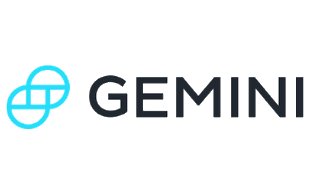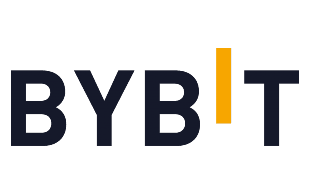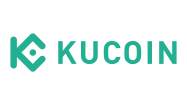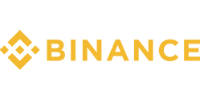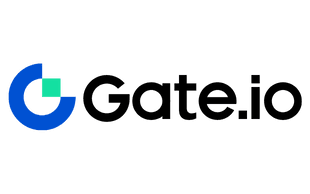Disclaimer: This page is not financial advice or an endorsement of digital assets, providers or services. Digital assets are volatile and risky, and past performance is no guarantee of future results. Potential regulations or policies can affect their availability and services provided. Talk with a financial professional before making a decision. Finder or the author may own cryptocurrency discussed on this page.
A metaverse is a virtual world where players can hang out, chat with friends, buy virtual real estate and even earn income.
Most metaverse games use nonfungible tokens (NFTs) as virtual parcels of land, clothing, avatars and other in-game assets. The players themselves “own” these games and their assets, creating a functioning economy that isn’t governed by a single entity.
Decentraland and The Sandbox are both metaverse games that allow players to own, buy and sell NFT collectibles. These games are very similar at first glance. Both are free to play and join, and buying digital assets — like virtual real estate — is how you progress. However, fees, plots of available land and capabilities are how they differ.
If you’re looking to focus on one metaverse, here’s how they compare.
Decentraland vs. Sandbox: Snapshot comparison
Compare the features of these two metaverse games side by side:
| Decentraland | The Sandbox | |
|---|---|---|
Launch year | 2017 | 2018 |
Plots of land | 90,000 parcels | 166,464 parcels |
VR capabilities | No | No |
Tokens in circulation | MANA: over 1.8 billion | SAND: over 1.06 billion |
Crypto wallet required | No, but a software wallet required to store digital assets. | Yes |
Wallets supported | Software wallets that can be integrated with browsers. Recommends MetaMask. | MetaMask, Bitskit and Venly |
Marketplace fees | 2.5% MANA cost in all transactions | 5% fee applied to all transactions |
Decentraland breakdown
Launched in 2017, Decentraland is built on the Ethereum network, developed by Esteban Ordano and Ari Meilich. It’s a 3D metaverse game that focuses on land sales and player engagement and uses NFT technology at nearly every level. It states that it’s the “first-ever virtual world owned by its users.”
Decentraland has over 600M active monthly users. Just to give you an idea of the scope and earning potential of this game: A play-to-earn poker game within Decentraland has around 6,000 unique players each day, generating more than $7.5M in revenue, reported by CoinDesk.
You don’t need a cryptocurrency wallet to play and explore Decentraland, but you need one to open earning capabilities and purchase in-game NFTs.
Players can explore, chat, create and sell unique avatar wearables and even trade ERC-721 game tokens.
Image source: Decentraland
Play-to-earn strategies in Decentraland:
- Buy and sell LAND.
- Mint avatar wearables to be sold at Decentraland’s market.
- Earn royalties from wearable creations on secondary market sales (coming soon!).
- Design your own play-to-earn games, scenes, challenges and more using the tool builder.
- Stake MANA with third-party providers.
The Sandbox breakdown
The Sandbox is also built on the Ethereum blockchain. The game was originally created by the game studio Pixow in 2012 as a mobile phone game. It later became a PC game and was acquired and relaunched by Animoca brands in 2018.
Like Decentraland, The Sandbox is a decentralized 3D world-building game that uses NFT technology, but it also uses voxel assets to create 3D items. It has over two million registered users to date. Style-wise, it looks similar to Minecraft — where Decentraland looks more realistic than blocky.
Players need a cryptocurrency wallet to sign up and play, and the game supports three software wallets: MetaMask, Bitskit and Venly.
You can access the Voxel Editor to create 3D models (animals, avatars, vehicles, animations and more), buy and sell NFTs on The Sandbox Marketplace or use the Game Maker to make your own play-to-earn games on LAND — owned NFT virtual parcels.
Play-to-earn strategies in The Sandbox:
- Create NFTs to sell on the market.
- Create pay-to-play games.
- Buy and sell LAND.
- Rent LAND to other users.
- Stake SAND-ETH on Uniswap or mSAND-MATIC on Polygon (and LAND staking soon).
Decentraland vs. The Sandbox: Real estate
Virtual real estate is available in many metaverses. In both Decentraland and The Sandbox, the virtual parcels are called LAND, which are NFTs, and have nearly identical purposes.
Depending on the metaverse, virtual parcels can be decorated with art NFTs, used as a place to host events or a place to build play-to-earn games and earn.
Decentraland
MANA is Decentraland’s native cryptocurrency, an ERC-20 token. It can be burned, spent in-game or used to buy LAND parcels. As of March 2022, MANA is valued at $2.49 USD, according to CoinMarketCap.
There are 90,000 LAND parcels. The parcels can be bought with MANA or Ethereum (ETH). Individual parcels are 16 square meters, virtually, and can have unique attributes that increase its value — near a district, road adjacent, waterfront, etc.
You can use LAND to host events, play games that you or other users create or interact with other players.
Since Decentraland only has 90,000 LANDs available, there’s more scarcity than The Sandbox’s total of 166,464. In terms of value, once all The Sandbox LANDs are claimed, which real estate is more valuable remains to be seen.
Mortgages in Decentraland
You read that correctly — you can take out a mortgage in Decentraland for LAND. Decentraland and Ripio Credit Network (RCN) partner to make mortgages possible — with the use of smart contracts — so LAND is more accessible to players.
While browsing LAND for sale on the Decentraland Marketplace, you can choose a LAND and select REQUEST MORTGAGE. An application requires you to enter the amount requested (in MANA). You’ll be required to make a 10% down payment of the LAND value.
However, putting in a mortgage doesn’t take the LAND off the market, and like a traditional loan, there are loan agreements and interest rates. The LAND is taken off the market once a lender fulfills the mortgage request. You’ll make periodic payments until the amount is paid in full, then you can officially claim the parcel.
The Sandbox
Users purchase LAND — ERC-721 NFTs — with SAND, the game’s native currency. SAND is valued at $2.93 USD, according to CoinMarketCap, at the time of writing.
Out of the 166,464 pieces of LAND, The Sandbox holds 16,704 to host special in-game events, and 25,920 LANDs are held in reserve for The Sandbox’s partners, creators and the like, according to StealthOptional. This means that 123,840 LANDs are, or will be, available for purchase.
To buy LAND from The Sandbox directly, look for official LAND sales on The Sandbox’s marketplace, announced on social media channels. Once LAND sales are sold out, or there isn’t an active sale, you’ll have to buy LAND on secondary mixed marketplaces, like Rarible and OpenSea.
LAND is used to host events, build games on and populate with ASSETs. Owners of LAND can also rent out parcels to other users. How often players use your LAND correlates to how much you can earn while playing.
LAND parcels can be combined to form ESTATEs, and an ESTATE that’s owned by more than one person is called a DISTRICT, which can be broken up into smaller LANDs.
Marketplace fees
On Decentraland Marketplace, there’s a 2.5% MANA cost in all transactions. There’s a 5% fee applied to all transactions on The Sandbox’s marketplace.
On both metaverses, you also need to pay a transaction fee — gas fee — when you interact with the Ethereum blockchain.
Compatible exchange: Gemini Cryptocurrency Exchange
Minimum Deposit
Cryptocurrencies
Fiat Currencies
- Wide range of exchangeable currencies
- User friendly
- Newcomer incentives
- Insurance on currency balances up to $250k
- Balances can earn interest
- High fees on mobile app
- Missing some notable top 20 currencies
- No linked debit cards available
Gemini's strongest point is its Gemini Earn program, which allows users to earn up to 7.4% interest on specified cryptocurrency balances.
Gemini has a wide selection of cryptos available for exchange on the platform. However, some notable entries from the top 20 by market cap are missing, such as Cardano and Solana.
| Deposit Methods | Bank transfer (ACH) PayPal Wire transfer (USD) Bank transfer (EUR and GBP) FAST transfer (SGD) Cubix Plaid Direct Payments (UK) |
|---|---|
| Deposit Fees | ACH transfer: none Wire transfer (USD): determined by your bank +$25 PayPal: 2.50% Cubix: none |
| Withdrawal Fees | ACH transfer: none USD wire transfer: $25 |
| Trading Fees | Trading: Dependant on transaction size: $10 or less: $0.99 $10–$25: $1.49 $25–$50: $1.99 $50–$200: $2.99 More than $200: 1.49% of order value Spread: 0.5% convenience fee on all transactions |
How do these games make money and who runs them?
Decentraland is overseen by the nonprofit Decentraland Foundation. The game makes money by issuing and holding MANA tokens. When it first started, it raised $26M by selling MANA to investors, according to Product Mint. Decentraland also makes money from transaction fees on its marketplace.
Similar to Decentraland, The Sandbox makes money from issuing and selling SAND tokens, and other digital assets. It’s overseen by Animoca Brands. The Sandbox also earns money from transaction fees on its marketplace.
Compare marketplaces to buy NFTs
Are you visiting from outside the US?
Our final take
Overall, the games are similar, with both referring to virtual parcels as LAND, similar native currency values and a nearly identical way to earn income.
Both games lack VR support. However, in Decentraland, there’s talk of adding VR support soon.
Decentraland offers players the ability to take out mortgages to get LAND, which is a huge plus for players without the budget to pay for pricey LAND out of pocket. Additionally, creators will be able to earn royalties from NFTs created in game.
To progress in either game, you need a crypto wallet, some cryptocurrency to make LAND purchases to open up earning opportunities — and time on your hands. Both games are free to try, so giving each a test run could help you decide which is your cup of tea.
Whether products shown are available to you is subject to individual provider sole approval and discretion in accordance with the eligibility criteria and T&Cs on the provider website.
Ask a question
More guides on Finder
-
Top 29 NFT and cryptocurrency influencers in 2022
Check out the top tastemakers for crypto, NFTs, DeFi, Bitcoin and blockchain technology, from NYT experts to published authors and YouTubers.
-
Finder Awards 2022: NFT marketplaces
We compared over 30 NFT marketplaces to award the top platforms of 2022.
-
NFT vs. Crypto
Crypto and NFTs are far from the same thing – learn the differences.
-
Town Star review: An addictive P2E NFT farming simulation
In this Town Star guide you’ll learn how Gala Games’ free-to-play NFT farming simulator with P2E potential puts fun first.
-
NFT trading cards: What they are and how they work
Explore the world of NFT trading cards
-
My DeFi Pet game guide
My DeFi Pet is a blockchain game with many ways to interact with your NFT pets.
-
NFT statistics
The definitive ranking of the NFT adoption across 26 countries.
-
Crypto.com NFT marketplace review
Trade, mint and collect with Crypto.com’s NFT marketplace.
-
eBay NFTs review and guide
A deep dive into eBay’s foray into the NFT ecosystem, looking at everything from available categories to potential drawbacks.

